Renaissance painters used color, line and scale to create a linear perspective in their artwork, giving their paintings realistic depth. These techniques can be used in garden design to trick the eye into believing a space is much larger than it is.
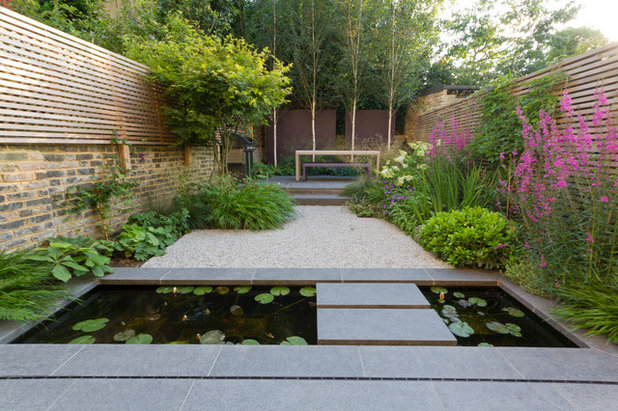
John Davies Landscape
Perspective illusions are based on the idea that objects appear to get smaller as we look into the distance. Renaissance painters in Europe were the first to use the idea, and they developed rules that enabled them to create realistic images using the theory of linear perspective.
These techniques were developed for paintings, but we can follow the same rules to deceive the eye into believing our outdoor spaces are larger than they actually are. Similarly to its use in a painting, linear perspective in the garden tends to work only from a single viewpoint, but there are other techniques we can use in the garden to create the illusion of size and depth.
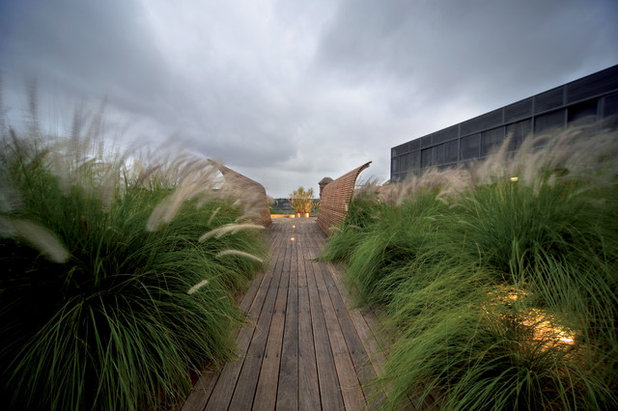
Dale Jones-Evans Pty Ltd Architecture
Use Linear Perspective in PavingThis boardwalk illustrates how linear perspective tricks the eye. As the decking recedes, the slats appear to get narrower — they would appear to meet if they continued to the horizon.
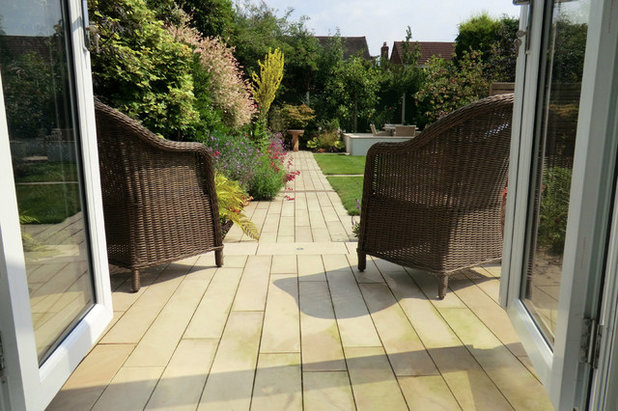
Kirman Design
The same effect can be seen in the linear paving used here. Rather than using square or rectangular pavers, the designer employed perspective illusion with long, thin pavers that lead the eye into the distance.
The paving joints help emphasize the illusion — this could be increased further with a more visible joint on the long sides and an invisible, narrow joint on the short sides. A scaled-down feature at the end of the path would intensify the perspective as well.
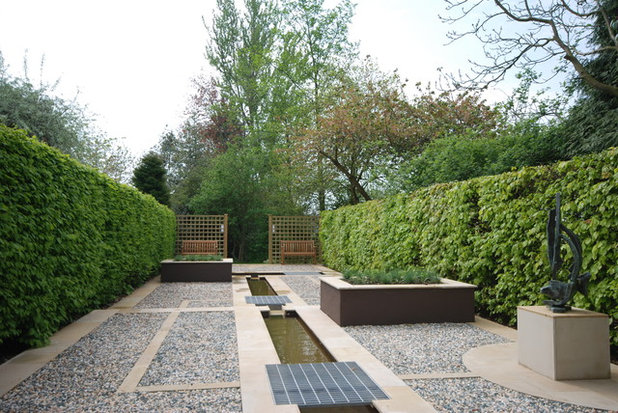
Lizzie Tulip Garden Design
Enhance Perspective by Mixing ScaleBoundary walls and hedges can display the same perspective illusions as paving or decking, with their base and top lines seeming to taper toward one another the farther away they get. The illusion could be increased by clipping the tops of the hedges to be shorter toward the garden’s far boundary.
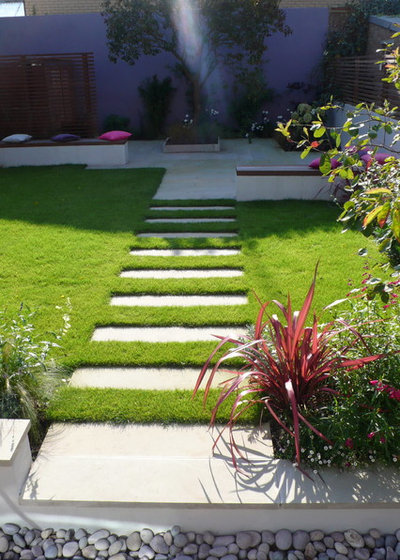
London Garden Designer
You can increase the illusion of perspective with steppingstones, especially when they’re on flat planes of grass or gravel. Here, the distance between pavers is reduced the farther away they are out in the garden, creating a great impression of distance.
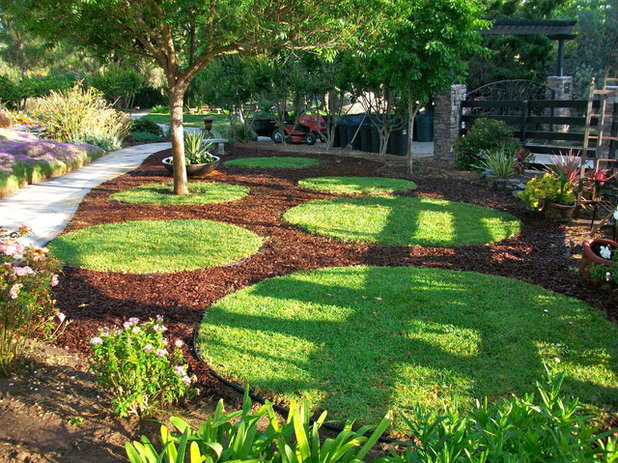
In this design, larger circles in the foreground and smaller circles in the background accentuate the perspective, convincing the viewer the garden is larger.
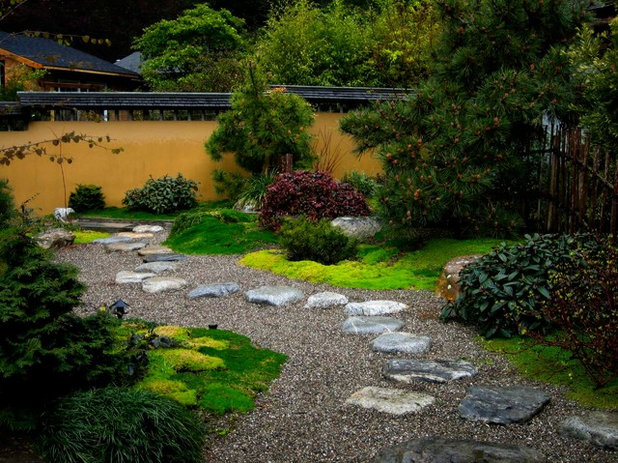
Facciuto Landscape Design & Construction
Add Width With Winding PathsMake small gardens seem longer by adding a curved or zigzag path, rather than just employing a straight, central pathway. This will give the impression that the garden is wider, as the eye will move from side to side rather than straight up the middle to the rear of the garden.
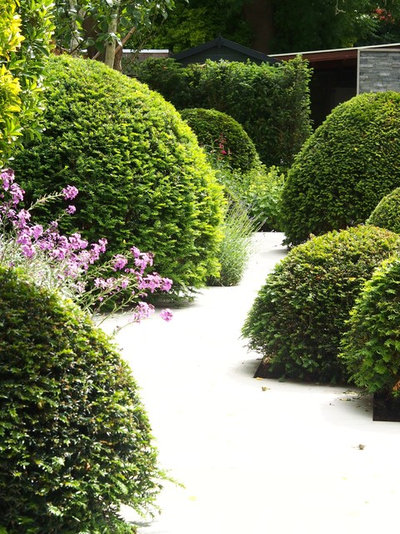
London Garden Designer
Carefully placed plantings help to accentuate the snaking of the path through this small garden and boost the illusion that the garden is larger than it really is.
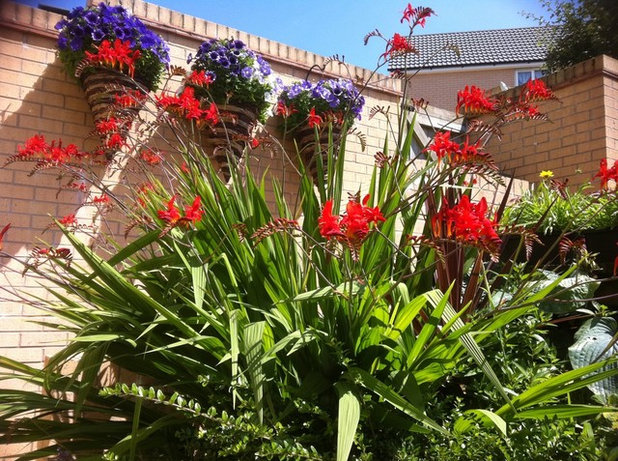 Expand volume with color.
Expand volume with color. Color can be a great way of changing our perception of spaces, and unlike the previous perspective illusion techniques, it doesn’t rely on the garden’s being viewed from a single point. Bright, hot-colored plants, such as the red ‘Lucifer’ montbretia (
Crocosmia ‘Lucifer’) shown here, tend to seem larger in volume and advance toward us, while cooler blue tones, such as the blue petunias in the hanging cones, recede.
To increase perceived depth in your garden, plant intense reds, oranges and yellows at the front and cool blues, purples and lilacs at the rear.
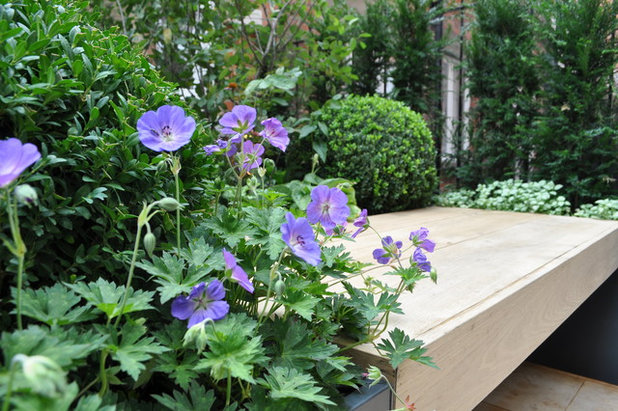
Aralia: Innovation in Landscape Design
Additionally, dark colors retreat while paler colors advance. Pastel shades are perfect to create this illusion, with light shades planted to the fore and deeper tones set farther back.

Matthew Cunningham Landscape Design LLC
This technique applies to the hardscape as well, especially effective in smaller and courtyard gardens. Painting a rear boundary fence or wall a dark color will give the impression that is is receding and give more depth to the garden.
Get a Knack for Black in the Garden
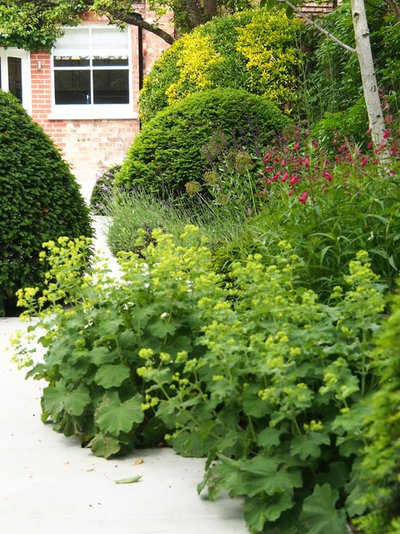
London Garden Designer
Bringing Texture Into PlayTexture can create the illusion of depth in the garden. Landscape painters create the illusion of depth in paintings by reducing foliage detail in the distance. In gardens, the same effect can be achieved by incorporating plants with finer, more uniform foliage at the rear of the garden and adding bold, glossy-leaved plants near the front.
4 Foliage Types for Distinctive Gardens
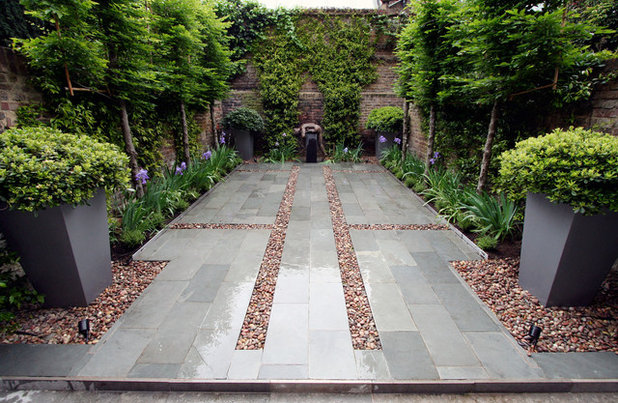
Kate Eyre Garden Design
This enclosed courtyard garden shows in its design all the benefits of using the tricks of linear perspective. The longitudinal paving leads the eye to a vanishing point beyond the boundary wall, and while the four tall planters in reality are the same size, those at the rear look much smaller as perspective takes hold. Garden designers, like painters, are magicians, and perspective is just one of the tricks that they keep in their tool bag.





